Making Good Progress?: The future of Assessment for Learning
£15.80£17.10 (-8%)
Making Good Progress? is a research-informed examination of formative assessment practices that analyses the impact Assessment for Learning has had in our classrooms. Making Good Progress? outlines practical recommendations and support that Primary and Secondary teachers can follow in order to achieve the most effective classroom-based approach to ongoing assessment.
Written by Daisy Christodoulou, Head of Assessment at Ark Academy, Making Good Progress? offers clear, up-to-date advice to help develop and extend best practice for any teacher assessing pupils in the wake of life beyond levels.
Written by Daisy Christodoulou, Head of Assessment at Ark Academy, Making Good Progress? offers clear, up-to-date advice to help develop and extend best practice for any teacher assessing pupils in the wake of life beyond levels.
Read more
Additional information
| Publisher | New edition (2 Feb. 2017), OUP Oxford |
|---|---|
| Language | English |
| Paperback | 224 pages |
| ISBN-10 | 0198413602 |
| ISBN-13 | 978-0198413608 |
| Dimensions | 22.61 x 1.27 x 15.24 cm |

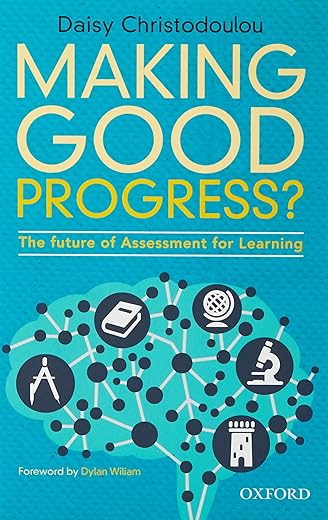
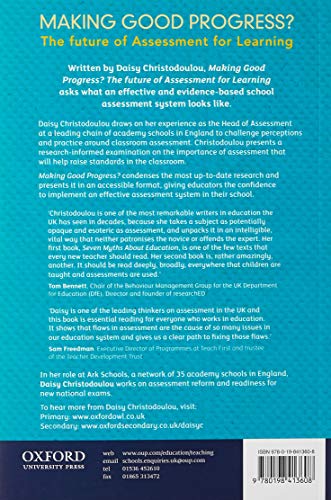
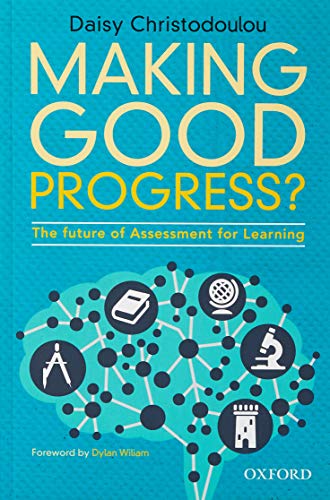


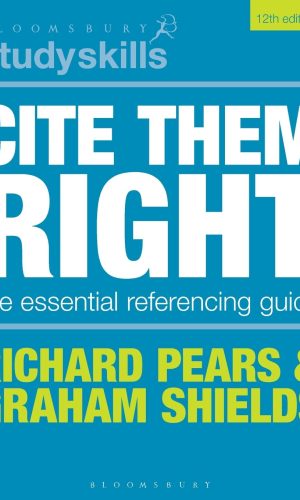
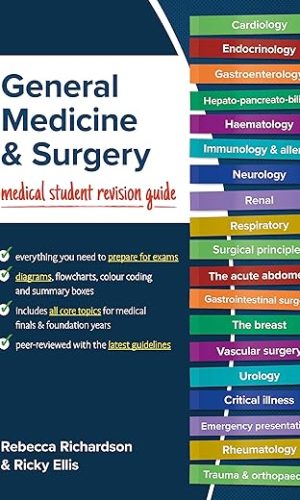
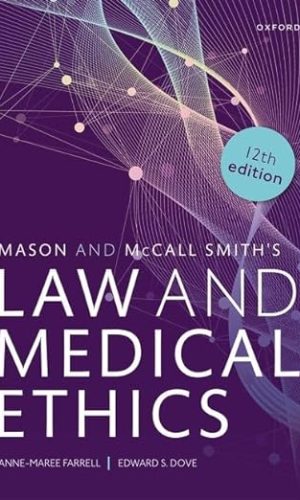
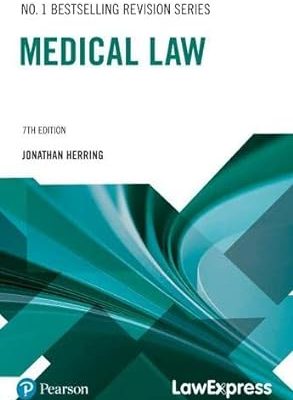

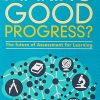
by JT
I will start my review with a declaration of interest, I work at one of the schools in the academy chain that Daisy works for. However it should be noted that the model that Daisy proposes in the book is neither embedded nor fully implemented (yet) across the chain.
The real strength in this book lies in its aim to look at assessment and not to get diverted by current changes in the assessment systems. If you are looking for a book that will tell you how to grade at 9-1 GCSE or to benchmark at KS2 you will not find it here. Instead you will find the arguments to release curriculum planners from the shackles of deriving ever more summative like tasks in formative assessments. You will instead explore the knowledge of learners, understand what they do and do not know and be able to provide feedback for progress.
Making Good Progress? is an immensely easy read especially for those involved in curriculum planning and assessment design. It’s short chapter style allows the reader to pause at the end of each section and consider the possible uses for the arguments in their own environments. This book is highly recommended for anyone who wants to deeply think about progress in their schools.
Can we find better ways of giving feedback for progress? Does formative assessment always need to be linked to the test? Can we reward artistic and talented responses? Does summative assessment need to be done termly? Can we rely on summative grades/benchmarks to tell us what our learners know?…… all of these questions and many more can be tackled when reading this book.
by Nicole Williams
I am a trainee Secondary teacher, who started PGCE at age 50 after other degrees and careers. I left school before the National Curriculum was even introduced, long before Inside The Black Box, AFL etc. I thoroughly enjoyed this book as a critique of recent methods of formative and summative assessment. I enjoyed the overview of how learning becomes embedded in long term memory. I will trial using diagnostic (hinge) questions about material just learned alongside material previously covered in the syllabus, at the end of each lesson, as a key pillar of formative assessment. Whilst I am on a small timetable, I have the luxury to be able to collect my pupils’ quiz sheets, do question level analysis and pupil level analysis and looking at wrong answers to identify misconceptions I can address and teaching methods that need improving, and what I discover will inform my subsequent lesson plans. Definitely worth trying. I agree with the author that we shouldn’t be only teaching to the test as this invalidates inferences employers and higher educators make about a pupil’s ability across a whole domain, however, even as a new trainee, I think its rather idealistic to expect schools to do any different if the test is how they, too, are measured and ranked. I think a balance needs to be struck. I would not advocate going back to the old ways of teaching that I experienced in the 80s with an exciting broad and rich syllabus but almost no guidance on exam technique, marking rubriks or practice questions whatsoever. I am grateful my own daughter will be saved the anxiety, even terror, I felt, going into exams armed with dextrasol, prayers, cramming, and almost no exam prep and practice. I do agree, however, that teaching to the test can go too far. When GCSE results feed Progress8, and so, league tables, parents’ choices, professionals’ career prospects, of course it is inevitable that some schools will try to game the system, and do so very very effectively, achieving high grades, but thin education. I observed teaching in 6 schools in the run up to my PGCE and was saddened by the thin plain fare I saw in one school where they started Humanities GCSE content and questions, structure strips and marking on real GCSEs in Y7, fresh out of Primary. A balance between what I experienced in the 80s and this, would be better. Coming from global private sector and UN background I appreciate that the last chapter is about the inevitable computerisation of Secondary learning, albeit with teacher support. I look forward to the day in the distant future when that is up and running effectively, as I feel it could provide the best differentiation and at the same time could save the sanity of the teaching profession and go some way to addressing the recruitment crisis. Not holding my breath, though and I hope I live to see that day when we can have a glorious multimedia offer that continuously assesses and drops up or down content matching a student’s place on the progressive model. I think such a platform, monitored by teachers using call centre technology to track progress and attention and need for intervention in class, could be especially beneficial for students who have issues with literacy and numeracy and background knowledge. Assessment of accessibility of material and tailored intervention strategies could be built into the algorithms. G&T students could be better catered to as well, with differentiated higher order material and tasks. Instead of every teacher round the country trying to build up to date research case studies and multimedia into lessons, a team of teacher-webmasters could do it for the whole country. Oh brave new world. There could be linkages between subjects in a way that is simply not possible currently. I enjoyed global learning platforms and global learning communities in my previous careers and love Futurelearn, EdX and Coursera. Surely what the author proposes is an obvious next step for Secondary education. Online is the main way young people choose to interact with information and each other, learn and create in their own time these days, and it is how many jobs happen too, so its arguable that it could be a better preparation for work life and lifelong learning.
by Dominic Salles
Perhaps my hopes were too high. The chapter ‘Aims and Methods’ draws conclusions from two studies on deliberate practice and novice and expert performance – they are dramatically different conclusions from my reading of the studies. These quibbles are about how students learn, and are not directly relevant to assessment, and I could be wrong. So I read on.
The discussion about what and how to assess, how to juggle the demands of formative and summative assessment was very good – it confirmed everything I knew already, and added a bit more. But my main reason to buy the book is this – OK, SO WHAT SHOULD ASSESSMENT LOOK LIKE ACROSS A SCHOOL OR A MAT? No worries, the penultimate chapter, “An Integrated Assessment System” suggested all would be revealed.
But no, Christodoulou simply tells us what a national fix would look like. Fine, brilliant ideas, I’d accept them all. But what do we do in a school while we wait for national bodies to talk to each other? Er…..answer came there none. Daisy – you were running assessment for Ark schools, it’s not as though you hadn’t thought this through and didn’t have a range of answers to tell us. It’s like reading a brilliant book on the nutrition of food types which then gives you the brilliant advice of how the NHS and other bodies should coordinate, and then tells you personally, ‘oh, by the way, maybe you would lose weight and be healthy if you just eat less.’ This is not ok.
by Liam
As per title
by Teacher teacher!
I bought this as a trainee teacher as I’m interested in ‘assessment for learning’ (AFL) . I’d read ‘Inside the Black Box’ (ITBB) and found some interesting ideas that I wanted to put into practise in my teaching, but I’ve found that in different schools there are different ideas about what AFL looks like. The author has some very interesting, common sense ideas about why AFL has not been as successful as the authors of ITBB would have liked, and what can be done to get the most value out of it. I would recommend this book to anyone interested in what AFL can do for their practice of teaching, but it also needs to be read by senior management so that the decision makers in a school don’t fall into the trap of requiring AFL strategies that are ineffective, but look good for inspections.